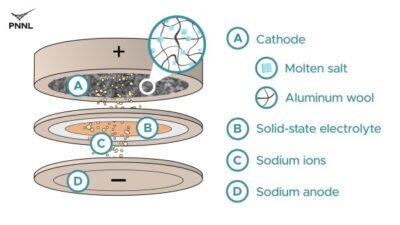The Sodium-Ion Battery Is Coming To Production EV Cars This Year, Such As The Chery iCAR

Sodium is also abundant, but unlike lithium, is readily available. Sodium — one of the primary components of table salt — is chemically similar to lithium, and thanks to the explosion in lithium carbonate prices, many companies are researching ways to use it to replace lithium in the batteries for electric vehicles. Sodium is an attractive alternative to lithium because it costs only 2 to 3% as much as lithium. Imagine what that price difference could mean to the price of new electric vehicles!
Despite being chemically similar, sodium-ion batteries today have considerably lower energy density than lithium batteries. Things are moving quickly in battery development. The sodium-ion batteries available today will likely improve just as quickly.
On the other hand, sodium batteries are much less affected by low temperatures and appear to be able to handle more charge/discharge cycles than lithium-ion batteries. The latest sodium batteries do not require scarce materials like cobalt and nickel. Both CATL and BYD say they are about to introduce EV battery packs that have a mix of lithium-ion and sodium-ion cells.
So as is usual with battery technology, there is not yet any read drop-in better replacement for Lithium batteries, especially for EVs. But what is also quite usual, is that money is being pumped into research to radically improve these various alternative chemistries. And what is also certain is, that even if these batteries are still not compact enough for EVs, they will have a place so long with grid storage and similar use cases.
See https://cleantechnica.com/2023/04/22/the-sodium-ion-battery-is-coming-to-production-cars-this-year/
#Blog, #batteries, #environment, #EV, #technology